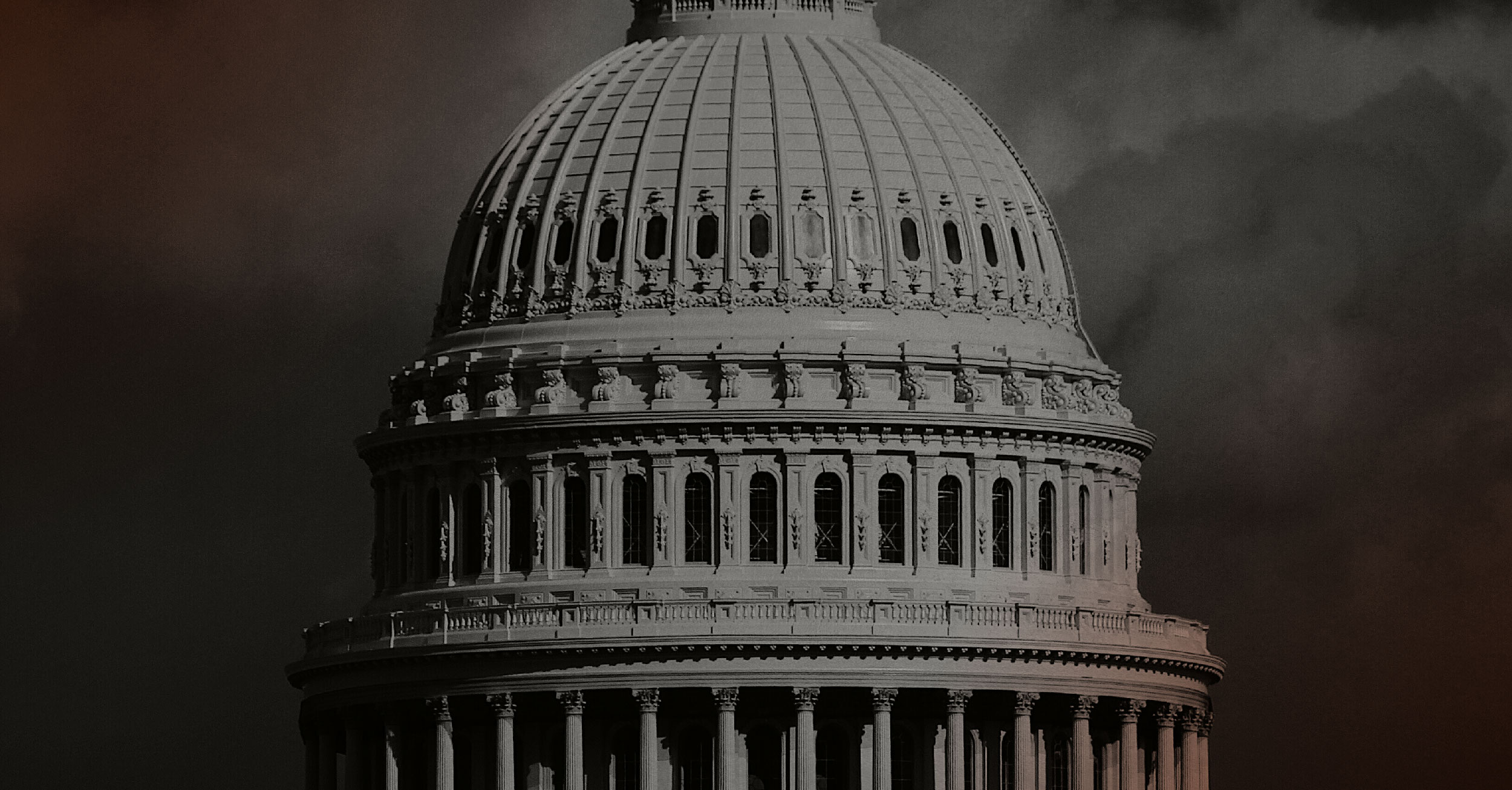
SCOTUS Set To Hear Oral Arguments In a Case That Will Decide the Fate of Drugs Relied on by Millions
Tomorrow, extreme anti-abortion activists are scheduled to present arguments before the Supreme Court in FDA v. Alliance for Hippocratic Medicine and Danco v. Alliance for Hippocratic Medicine. This case could dramatically curtail access to mifepristone, a safe and effective medication essential for abortion access that was approved by the FDA 24 years ago. Last year, Republican-appointed judges in Texas and on the Fifth Circuit Court of Appeals ruled in favor of plaintiffs, issuing separate orders severely restricting access to mifepristone, but the Supreme Court stayed this decision. A decision to ban mifepristone would threaten millions of women’s access to safe and legal abortions, but it would also open the door for the politically-motivated removal of other safe and effective drugs from the market — throwing the entire U.S. drug approval process into chaos.
What Happens Next
- March 26: The Supreme Court will hear oral arguments on the case.
- By early July: The Supreme Court will issue a ruling on the case.
Background
In April 2023, a Trump-appointed federal judge in Texas attempted to revoke authorization for mifepristone, issuing a ban on the medication. His ruling was partially stayed pending appeal, but two MAGA judges on the Fifth Circuit Court of Appeals allowed some restrictions on the drug to remain. The federal government quickly appealed the partial stay to the Supreme Court, which rejected the Fifth Circuit’s restrictions and stayed the ruling in its entirety pending appeal. In August 2023, the Fifth Circuit ruled in favor of anti-abortion advocates, but the ban on mifepristone remains on hold while the Supreme Court weighs an appeal of the ruling.
The anti-abortion advocates, represented by a far-right legal organization, brought this suit with the sweeping aim of achieving a nationwide mifepristone ban. The consequences of this ruling will be most detrimental for women of color, people living in rural areas, and poorer Americans who face the steepest barriers to accessing care.
What the Experts Are Saying
Carrie Flaxman, Senior Advisor at Democracy Forward: “What the lower courts did was utterly fail to defer to the FDA’s scientific judgment that the changes that it made were appropriate and that the drug is safe and effective. In doing so, it is the first time that courts have second-guessed the safety decisions that the FDA has made in approving the drug so there are much broader consequences for the FDA.” [Protecting Our Care in the Courts, 3/12/24]
- This Case Could Throw Everything Into Chaos and “Open The Floodgate.” “If the Court allows these plaintiffs to go forward, it really could open the door to a floodgate of potential plaintiffs. Any group could create a nonprofit, perhaps in a favorable District, and file a lawsuit without really showing the kind of injury that courts have required.”
- “A Huge Threat” to Mifepristone And Drug Approvals. “I want to be clear that even if the court orders those [REMS] restrictions reimposed, that that is a huge threat to access to mifepristone. It is also a threat to drug approvals, not just of [mifepristone], but of really everything on the market.”
Jocelyn Frye, President of the National Partnership for Women & Families: “People do rely on the FDA. They rely on science for a number of decisions. They rely on consistency in the law. What Dobbs did is upend that entirely. Many of the factors in traditional ways you would expect the Supreme Court to look at in that case they threw out the window, and arguably because there’s now a conservative wing on that court that has a different agenda in mind.” [Protecting Our Care in the Courts, 3/12/24]
- “It Should Be An Easy Decision.” “This court is sensitive to the public perception that they are driven by ideology and not by law…[The Supreme Court] should look at precedent, they should look at the law, they should look at the informed judgment of the FDA , and rely on sound science. If they do those things then it should be an easy decision.”
- Mifepristone Is Widely Used And “Extraordinarily Safe.” “The real test is not necessarily the popularity of mifepristone, but mifepristone is widely used. People have used it; it is extraordinarily safe. And people…have come to rely on that [as an available tool]…The other thing is that it is a tool that as part of the evolution of health care practice it is something that can be used in the context of telemedicine. So as we see health care practices become more accessible to more groups of people, it is troubling to see any reversal that is going to make it harder to access care.”
William Schultz, Partner at Zuckerman Spaeder, and former General Counsel for the Department of Health and Human Services: “One of the reasons why Americans across the country should be concerned about the potential outcome of this case is the overturning of an FDA decision and the effects on the approval process. This can really diminish the confidence that patients, doctors, and health professionals have in drugs approved by the FDA. The inevitable result is it’s going to back up the process. They will require more studies. They will hesitate to approve improvements to drug labels. It will be slower in making these decisions, and the consequences of that are going to be patient lives – you’re talking about life-saving drugs.” [Protecting Our Care in the Courts, 3/12/24]
- “When The FDA Is Undermined, There’ll Be Less Faith In Approved Drugs.” “When the FDA is undermined, there’ll be less faith in approved drugs. People will be more likely to turn to dietary supplements and alternative remedies, which, if you have a serious treatable disease, is a public health disaster.”
- “This Will Chill Investment Into Life-Saving Drugs.” “This will chill investment into life-saving drugs. It costs a lot of money to develop some of the most important drugs we have. PhRMA said in its Amicus brief that affirming the 5th Circuit will add uncertainty about its research, whether it can get drugs approved and if it gets approved whether that approval will be sustained so we will do less research which means less approval of lifesaving drugs. The interest in investment in lifesaving drugs will be diminished.”
What’s At Stake
Access To Safe And Effective Reproductive Care For Millions Of Women Nationwide. The combination of mifepristone and misoprostol, an ulcer medicine, has been found to have a 98 percent efficacy rate, and mifepristone is safer than Tylenol and Viagra. The plaintiffs argue that the FDA’s authorization of the drug over two decades ago was flawed and that the drug which has been used by over 2.5 million women is, in fact, dangerous. Twelve of the nation’s leading medical and scientific organizations have filed an amicus brief demonstrating that the drug is safe and studies and meta-analyses involving tens of thousands of women have shown the same thing.
- Outsized Impact On Women Of Color, Rural Populations, and Low-Income Women. An analysis by the Guttmacher Institute found that this decision will have an especially severe impact on people living in states where medication abortion plays a particularly critical role in ensuring access to care, including heavily rural states like Montana, Maine, and Iowa. As is true for all abortion restrictions, people of color, low-income individuals, and those without regular access to a nearby health care provider will be disproportionately harmed by restrictions and uncertainty around medication access.
The Science-Based FDA Drug Approval Process That Has Served America Well Since 1938. The Justice Department warned in an earlier brief that this lawsuit has the potential to undermine the country’s process for regulating pharmaceuticals. If the courts ultimately side with the plaintiffs, it will be an unprecedented situation. Professor Greer Donley of the University of Pittsburgh Law School says, “We’re talking about a judge who is a non-scientist overriding an agency full of experts about the safety and efficacy of a drug. That, to my knowledge, has never happened before.” Lawrence O. Gostin, director of the O’Neill Institute for National and Global Health Law at Georgetown University called the ruling, “A frontal assault on the legitimacy of the F.D.A. and their discretion to make science-based decisions and gold standard approval processes.”
Safe And Legal Medications Targeted For Political Purposes. A ruling affirming plaintiffs’ claims would open the door to any third party with a political agenda to challenge a medication that they object to. Ameet Sarpatwari, an expert on pharmaceutical policy and law at Harvard Medical School, said the ruling is likely to encourage a spate of additional challenges. “This opens the door to the courts’ second-guessing any FDA approval — especially for drugs for controversial areas like gender-affirming care, or PrEP for HIV prevention.” He argued it would also instill uncertainty in the pharmaceutical industry. “This should worry every manufacturer out there,” he said. “They are now not assured of a uniform market for their drug based on FDA approval.” Other experts have echoed this fear that a wide range of approved medicines could be targeted including mRNA vaccines, COVID-19 vaccines, HIV medications, hormone therapies, drugs that are derived from stem cells, or any class of medicines that may be politically unpopular.
Access To Life-Saving Drugs That Patients Count On Every Day. An earlier amicus brief filed by 19 leading scholars of food and drug law states, “We are not aware of any case in which a court has removed a drug from the market over FDA’s objection. The effects could extend far beyond mifepristone. No drug is without risk, and a ruling for Plaintiffs could lead to challenges to the FDA’s benefit-risk determinations for drugs it has approved to treat other diseases and conditions. Patients who rely on life-saving medications could see their drugs removed from the market with little notice.”
Innovation And Investment In New Drug Development. Pharmaceutical companies must plan years in advance which diseases and therapies to invest in. Injecting a huge dose of political uncertainty into the process could make investors and companies more hesitant to pursue innovative new treatments. Law Professor Rachel Sachs and Professor Donley recently explained that “[o]btaining approval for a new drug is expensive, time-consuming and risky. It typically involves years or decades of research and can cost hundreds of millions, or even billions, of dollars. Most drugs that enter the research and development process fail, never making it to market. The prize at the end of this ordeal is the FDA’s approval to sell the product.” Therefore, “[i]t could chill innovation nationwide if political actors could circumvent the agency’s data-driven process by engaging the courts. Manufacturers might become wary of investing time and money into products for a wide range of conditions which may — decades down the line — be the subject of nuisance litigation.”
Chaos In The Established Regulatory System. Following the initial ruling, R. Alta Charo, a professor emerita of law and bioethics at the University of Wisconsin said, “The biggest threat that a decision like this brings is the threat of creating chaos.” Charo also told the New York Times that a decision to invalidate an F.D.A. drug approval could have ripple effects for other federal agencies with technical expertise, including those that oversee regulations related to the environment, energy, and digital communications. “Imagine what you could do when you’ve got commercial interests that are upset about a whole slew of” issues, he said, adding, “There’s just no end to this really.”
Who Is Behind It
An “Alliance” Of Right-Wing Medical Groups Is The Lead Plaintiff In The Case. The plaintiffs in this case are led by the Alliance for Hippocratic Medicine, a group seemingly created for the sole purpose of filing this lawsuit. The Alliance was only incorporated in August of 2022 and the group’s sparse website is even newer than that.
The Other Plaintiffs Include Peddlers Of Anti-Choice Misinformation And Anti-LGBTQI+ Extremist Groups. The other plaintiffs include the American Association of Pro-Life Obstetricians and Gynecologists, the American College of Pediatricians, and the Christian Medical & Dental Associations. The American College of Pediatricians is a fringe extremist group that trades on its name similar to the premiere U.S. Association of Pediatricians to push anti-LGBTQI+ junk science via the far-right media and filing amicus briefs in cases related to abortion or LGBTQI+ rights. The American Association of Pro-Life Obstetricians and Gynecologists and the Christian Medical and Dental Associations are other far-right groups that use their members’ medical certifications to push false information regarding abortion and birth control. Including the dangerous pseudoscience of “abortion reversal.”
The Plaintiffs Are Represented By The Alliance Defending Freedom, An SPLC-Designated Hate Group. The legal team for the plaintiffs is the Alliance Defending Freedom (ADF), one of the most prolific extremist advocacy groups in the country. Designated a hate group by the Southern Poverty Law Center, the ADF has advocated both in the U.S. and abroad for forced sterilization of trans people, criminalization of same-sex relationships, and strict restrictions on abortions. ADF receives tens of millions of dollars in dark money annually, coming often from the same sources that led the right-wing attacks on the Affordable Care Act, Social Security, and Medicare.
Nearly 150 Congressional Republicans Have Filed An Amicus Brief Supporting The Extreme Case. 145 Republican Members of Congress, including 26 Senators and 119 Representatives, have filed an amicus brief in support of the plaintiffs. In the brief, they argue that the 23-year-old FDA approval of mifepristone was an “unlawful deregulation of chemical abortion drugs” that “has endangered patient health and safety,” despite presenting no evidence that the drug is anything but safe and effective.
More Than 20 Republican Attorneys General Have Filed An Amicus Brief Supporting The Suit. Twenty-two GOP attorneys general led by Mississippi have filed an amicus brief in support of the plaintiffs. In the brief, they argue that the 24-year-old FDA approval of mifepristone represents an “elective-abortion policy that Congress could never pass.” This brief argues that federal agencies themselves “erode the separation of powers,” “imperil federalism,” and “seize power,” and pushes the Supreme Court to subject the FDA’s actions to “searching review.”
Three Republican Attorneys General For Missouri, Idaho, and Kansas Filed A Separate Amicus Brief Supporting The Suit. Three Republican Attorneys General representing Missouri, Idaho, and Kansas – who all signed onto the 22-state amicus brief led by Mississippi – have filed a separate amicus brief in support of the plaintiffs, arguing that the FDA’s 24-year-old approval of mifepristone “has imposed increased costs to state-funded medical insurance and public hospitals.” If accepted, this dangerous legal argument, which claims that the drug’s approval created “sovereign harms that radically interfere with the ability of the States to set policy,” opens the door for challenges to any drug that increases costs to state-funded public health programs.
Why The Plaintiffs’ Legal Arguments Are Wrong
The plaintiffs assert several different claims:
- They contend that the FDA’s approval of mifepristone in 2000 should be invalidated because (a) the agency cited regulations governing drugs that “treat serious or life-threatening illnesses” and, plaintiffs contend, mifepristone does not fall within that category, and (b) the conditions for use specified by the agency were inadequate.
- When the agency approved the drug in 2000, it used its “risk evaluation and mitigation strategy” (REMS) authority to impose restrictions designed to ensure the drug is distributed and prescribed safely. In 2016, the FDA loosened those restrictions, allowing the drug to be used later in a woman’s pregnancy (up to 70 gestational days), prescribed after only one in-person clinic visit and by a broader set of healthcare providers, and taken by the woman at home rather than in a doctor’s office. The plaintiffs assert that these changes were not supported by the data relied upon by the FDA and ask the court to restore the original, more stringent restrictions.
- The plaintiffs also invoke the Comstock Act, a criminal law prohibiting the “knowing[]” mailing of “obscene or crime-inciting matter” that includes in its long list of items “article[s] or thing[s] designed, adapted, or intended for producing abortion.” They claim that this law required the FDA to prohibit the distribution of mifepristone by mail or common carrier.
This is a meritless lawsuit that should have been thrown out of court – for multiple reasons.
- The plaintiffs lack “standing” to sue. To file a lawsuit in federal court, a plaintiff must assert an “actual” or “certainly impending” real-world injury. These plaintiffs are not regulated by the FDA and do not prescribe mifepristone. Their claim – that patients will come to them for help after taking the drug, which will require them to divert attention from other patients, inflicting costs and risking potential liability and emotional distress – is indistinguishable from standing arguments that have been repeatedly rejected by the Supreme Court because they “depend[] on the unfettered choices made by independent actors not before the courts and whose exercise of broad and legitimate discretion the courts cannot presume either to control or to predict.”
- Most of the claims are, in addition, barred by the statute of limitations and/or failure to raise the arguments before the FDA. Federal law provides that a party seeking to challenge a decision by an administrative agency must file suit no later than six years after the decision. The challenge to the FDA’s approval of the drug in 2000 is therefore untimely. (The plaintiffs try to rely on their 2002 petition to the FDA challenging that approval, but that petition was denied in 2016, more than six years before the filing of this lawsuit.) The plaintiffs filed a separate petition urging the FDA to withdraw its 2016 decision loosening the REMS standards applying to mifepristone, which the agency denied in 2021 – making the challenge to the REMS standards timely; but the plaintiffs did not challenge the 2000 approval in that petition and their claim that the petition implicitly “reopened” the approval decision is contrary to basic principles of administrative law. Also, the plaintiffs have never raised their Comstock Act argument before the FDA. Finally, even the challenge to the 2016 REMS standards is not properly before the court because it has been superseded by the FDA’s 2023 action further revising those standards: the 2016 decision, therefore, is no longer operative.
- The plaintiffs are wrong on the merits. As the Justice Department and a company that manufactures the drug explain in detail: there is no basis for overturning the FDA’s expert determination in 2016 regarding the proper REMS standard for this drug, which was fully supported by the data cited by the agency; FDA properly rested its approval of mifepristone on its authority over drugs treating serious illnesses, because pregnancy can be, many times is, accompanied by complications posing serious risks to a woman’s health; and FDA’s 2000 approval and accompanying standards were a proper exercise of the agency’s expertise. The REMS and approval decisions are subject to deferential review and may be set aside only if found to be “arbitrary and capricious” – a high standard that the plaintiffs do not come close to satisfying. Concerning the Comstock Act, the government explained that, by 1960, “federal courts of appeals settled upon a consensus view that the Comstock Act did not prohibit the mailing or other conveyance of contraceptives or items designed to produce abortions where the sender does not intend them to be used unlawfully.” (A Justice Department opinion explains in detail the basis for this conclusion.) Therefore, “even if FDA were required to consider the Comstock Act, because the Comstock Act does not prohibit the mailing or other conveyance of abortion-inducing drugs where the sender does not intend them to be used unlawfully, and given that these drugs may be used lawfully, neither FDA’s decisions related to in-person dispensing nor the absence of a prior FDA affirmative prohibition on distribution by mail was inconsistent with the Comstock Act.”
- The plaintiffs are not suffering, or threatened with, irreparable injury. A party is entitled to an injunction only if it can show that, without the injunction, it will suffer irreparable injury. Here, for the same reasons they lack standing, their speculative arguments about harm cannot satisfy the irreparable injury requirement. And plaintiffs’ delay in filing suit – more than two decades after the drug was first approved and nearly a year after the FDA denied their petition regarding the REMS standards – further supports that conclusion.
- The balance of harms weighs sharply against the plaintiffs. Even when a plaintiff can demonstrate irreparable injury, a court may not grant injunctive relief if the harm to the plaintiff is outweighed by the harm that would be suffered by other parties and the harm to the public interest. Eliminating the availability of a drug that millions of women have used over two decades will inflict serious harm on Americans across the country who rely on the drug for safe and effective reproductive care. (Plaintiffs’ claims that mifepristone is unsafe are wrong: a mountain of evidence demonstrates the drug’s safety.) As the government explains, “[r]emoving access to mifepristone would cause worse health outcomes for patients who rely on the availability of mifepristone to safely and effectively terminate their pregnancies.” It would interfere with Congress’s decision to entrust the FDA with technical decisions regarding the safety and efficacy of drugs. It would also create a legal precedent that could disrupt the new drug approval system that has produced myriad life-saving treatments that benefit tens of millions of Americans.




